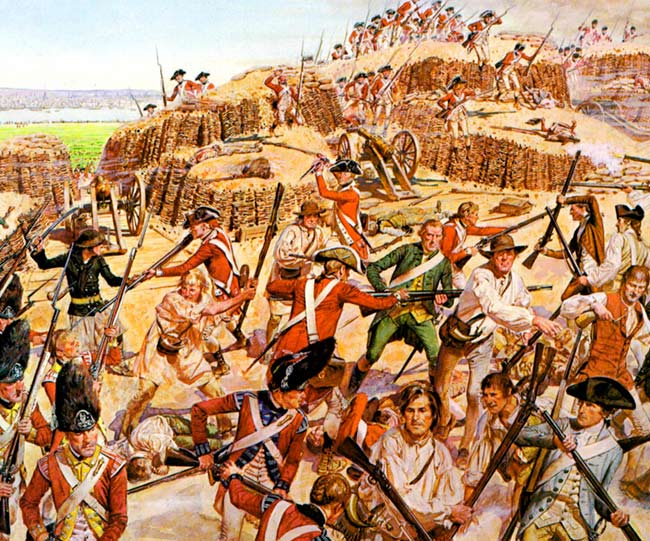
Bunker Hill, 17 June 1775
After the British rout from Lexington, a loosely organized New England army of volunteers and militia laid siege to Boston. The British commander, Sir Thomas Gage, determined to gain more elbowroom by seizing the Charlestown peninsula. Learning of Gage's plans, the Massachusetts Committee of Safety recommended the occupation of Bunker Hill, a commanding height near the neck of the Charlestown peninsula. But a working party of 1,200 Americans, sent out on the night of 16-17 June 1775, instead fortified Breed's Hill, a lower height nearer Boston.
When the British awoke next morning, they saw a fortification with walls six feet high astride Breed's Hill. Determined to take the barrier by assault, a force of 2,200 Redcoats under Sir William Howe landed on the Charlestown shore in early afternoon 17 June, and launched a well-planned three-pronged attack. The Americans, who had been reinforced during the morning, repulsed the British assault with devastating musket fire. Howe had to resort to frontal attacks on the American redoubt to avoid a costly defeat of British arms. After enduring two volleys that tore huge gaps in their lines, the Redcoats converged on the American forces in a final three-column attack. The Patriots, running out of ammunition, used their muskets as clubs against the British bayonets. Colonel William Prescott, seeing the damage wrought by the Regulars, ordered his men to "twitch their guns away." The homespun-clad Americans contested every inch of ground, but finally were forced to retreat from t he peninsula.
Bunker Hill gave its name to the battle fought on Breed's Hill. For the British it was a Pyrrhic victory, their losses amounting to over 40 percent of the forces engaged. A force of New England townsmen and farmers had proven its ability to fight on equal terms with British Regulars when entrenched in a fortified position.